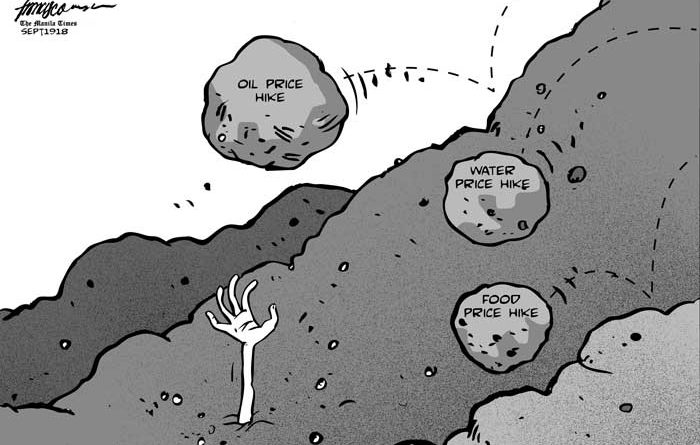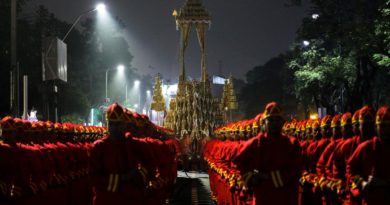OP ED EDITORIAL & CARTOONS: MANILA- PROBLEMS IN THE PHILIPPINES
Itogon tragedy yet another wakeup call vs mining ills
THE typhoon-induced landslide that buried a bunkhouse in the mining village of Ucab in Itogon, Benguet, is yet another tragic reminder of the perils of mining, particularly small-scale mining.
The Ucab landslide victims, according to the Chamber of Mines, were among those engaged in illegal gold-mining activities near the bunkhouse that used to be occupied by Benguet Corp. The area is a few kilometers away from the company’s Balatoc and Dalicno mines.
The village mine site, it should be noted, had been declared by the Mines and Geosciences Bureau (MGB) of the Department of Environment and Natural Resources (DENR) as a geohazard zone prone to landslides. Benguet Corp., in fact, had sent letters to the small-scale miners to leave the area.
As of this writing, the military’s Northern Luzon Command has recovered 39 bodies from the site of the bunkhouse, which local authorities said was also used by residents and workers as a place of worship. Rescuers fear that dozens more trapped under mud and rocks are now dead.
.
Itogon was by no means the first time such an accident happened. Landslides are common in small-scale sites in Compostela Valley in Mindanao, for example.
In April 2011, heavy rains loosened the slopes in the gold-rush area of Kingking, burying shanties and killing 14 people. The following year, rescuers pulled out 42 bodies from a landslide in nearby Pantukan Village.
The mounting death toll from mining landslides alone is a clear justification for tougher rules on small-scale mining operators, which have largely escaped regulation.
Because they -are practically unregulated, these operators do not pay national and local taxes, and cause irreversible damage to the environment. They also use banned toxic chemicals.
Small-scale mining is said to account for a whopping 60 percent of the gold produced in the Philippines. Given the wealth prospects, social problems such as child labor, prostitution, illegal drugs and gun-running are said to be prevalent in illegal mining communities.
Secretary Roy Cimatu of the DENR did the right thing in ordering the suspension of all mining and the revocation of all small-scale mining permits in the province of Benguet.
In June, Cimatu exempted small-scale mining projects in areas declared by the government as “People’s Small-Scale Mining Areas” or “Minahang Bayan” from the moratorium and audit imposed by his predecessor, Regina Paz “Gina” Lopez, in 2016. According to the MGB, 10 miners’ associations were given small-scale mining permits in the Cordillera Region alone.
It now appears that small-scale mining should have been included in the moratorium. We hope this was what Cimatu meant when he said on Monday that small-scale miners would be given cease-and-desist orders and would not be allowed to operate until the Minahang Bayan scheme is “fixed.”
As a long-term measure, Congress should give due consideration to President Rodrigo Duterte’s position that the Philippine Mining Act of 1995 be “abrogated” to put an end to mining once and for all, “never mind” the P70 billion in revenues estimated to accrue to the government.
Immediate policy action is needed in the Executive and Legislative departments, even if the result is not a total ban on mining operations. At the very least, mining should be severely restricted, if only to ensure that tragedies such as those in Benguet and Compostela Valley do not happen again.
.
7.1. Game changer – Tribune – The local clergy war vs President Duterte
.

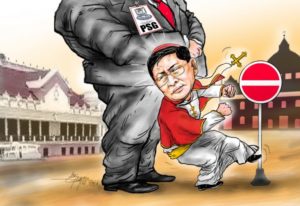
.
7.2. Manila Bulletin –Increased production answer to food shortages
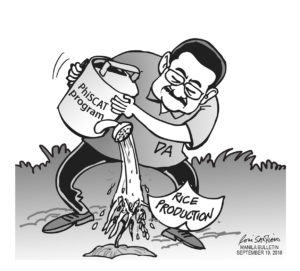
.
7.3. The Manila Standard – Silence is golden
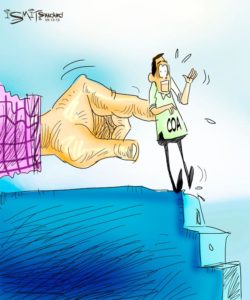
7.4. The Manila Times – PROBLEMS IN THE PHILIPPINES
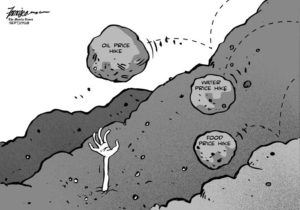
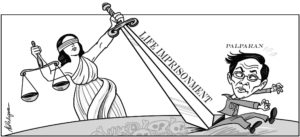
7.6 The Philippine Star – Justice, but still no closure


8.0. The Straits Times

The Straits Times says:
Beijing can build legacy with BRI
.
Five years on, the world’s most ambitious infrastructure programme is not a picture of good health. President Xi Jinping’s signature Belt and Road Initiative (BRI), launched in 2013, is materialising apace: The vast network of roads, railways, ports, pipelines and other connectivity projects now traverses nearly 70 countries to radiate towards China. Trailing alongside it are persistent doubts about its sustainability and intent.
Sri Lanka ceded a strategic port last year when it could not repay debt to Chinese creditors. Malaysia backed out of three pipeline projects and a rail link, citing “unequal treaties”. Pakistan, the site of the flagship BRI project, the US$62 billion (S$85 billion) China-Pakistan Economic Corridor, is reassessing projects out of discomfort with lopsided terms. Similar concerns encircle the China-Laos high-speed rail link, being built at a cost of some US$6 billion – nearly half of Laos’ gross domestic product (GDP). In Europe, Montenegro found its credit downgraded after borrowing from China to begin constructing a highway costing around a fifth of its GDP. The discourse on BRI has been dominated by negative headlines and animates those concerned about a grand plan to turn nations into tributary states ruled by an overlord that owns the infrastructure, supplies the capital and the labour, and writes the rules. But the mistrust surrounding China’s quest for proportionate weightage and voice in world affairs as it overtakes the American economy may be also overdone.
:
TO READ THE FULL ARTICLE: https://www.straitstimes.com/opinion/st-editorial/beijing-can-build-legacy-with-bri
.
 All photographs, news, editorials, opinions, information, data, others have been taken from the Internet ..aseanews.net | [email protected] |.For comments, Email to :D’Equalizer | [email protected] | Contributor
All photographs, news, editorials, opinions, information, data, others have been taken from the Internet ..aseanews.net | [email protected] |.For comments, Email to :D’Equalizer | [email protected] | Contributor

